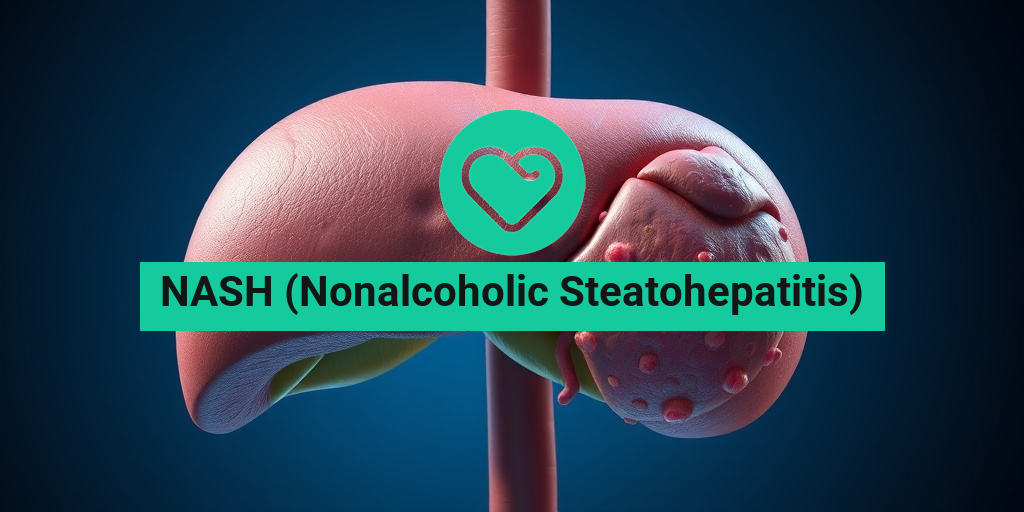What Is Knee Pain?
Knee pain is a common complaint that affects millions of people worldwide. It’s a type of musculoskeletal disorder that can be caused by a variety of factors, including injuries, overuse, and underlying medical conditions. Knee pain can range from mild to severe and can significantly impact daily life, making it difficult to perform everyday activities, exercise, or even walk.
Knee pain can be acute or chronic, and it’s essential to identify the underlying cause to develop an effective treatment plan. In some cases, knee pain can be a symptom of an underlying condition, such as osteoarthritis, rheumatoid arthritis, or tendinitis.
Common Causes of Knee Pain
Knee pain can be caused by a variety of factors, including:
- Injuries, such as ligament sprains or meniscal tears
- Overuse or repetitive strain
- Underlying medical conditions, such as osteoarthritis or rheumatoid arthritis
- Biomechanical issues, such as overpronation or flat feet
- Weak or tight muscles in the legs, hips, or core
Knee Pain Symptoms
Knee pain symptoms can vary depending on the underlying cause, but common symptoms include:
Pain Patterns
Knee pain can manifest in different ways, including:
- Aching or sharp pain in the knee joint
- Pain when bending, squatting, or straightening the knee
- Pain when walking, running, or climbing stairs
- Pain that worsens with activity and improves with rest
Other Symptoms
In addition to pain, knee pain can also cause:
- Swelling or inflammation around the knee joint
- Stiffness or limited range of motion
- Redness or warmth around the knee joint
- Weakened or unstable knee joint
If you’re experiencing knee pain, it’s essential to consult with a healthcare professional for an accurate diagnosis and treatment plan. In the meantime, you can try some self-care techniques, such as applying ice or heat, stretching, and strengthening exercises. Remember, knee pain is not a normal part of aging, and seeking medical attention can help you find relief and improve your quality of life.
🏥 If you’re struggling with knee pain, consider consulting with a healthcare professional or exploring evidence-based health resources like Yesil Health AI (yesilhealth.com) for personalized guidance and support. 💻

Knee Pain Causes and Risk Factors
Knee pain is a common complaint that can affect anyone, regardless of age or fitness level. But what causes knee pain, and who is at risk? In this section, we’ll explore the common causes and risk factors of knee pain.
Biomechanical Factors
Abnormal movement patterns and poor alignment can put excessive stress on the knee joint, leading to pain and discomfort. For example, if you have flat feet or overpronate, you may be more likely to experience knee pain.
Overuse and Repetitive Strains
Overexertion and repetitive movements can cause knee pain, especially in athletes or individuals who engage in activities that involve repetitive knee bending, such as running, jumping, or cycling.
Age and Wear and Tear
As we age, the cartilage in our knee joints can wear down, leading to osteoarthritis. This can cause knee pain, stiffness, and limited mobility.
Injury and Trauma
Sudden injuries, such as a fall or a blow to the knee, can cause knee pain. Additionally, previous injuries that didn’t heal properly can lead to chronic knee pain.
Medical Conditions
Certain medical conditions, such as rheumatoid arthritis, gout, and bursitis, can cause knee pain.
Lifestyle Factors
Obesity and inactivity can increase the risk of knee pain, as excess weight puts additional stress on the knee joint.
Knee Pain Diagnosis
If you’re experiencing knee pain, it’s essential to get an accurate diagnosis to determine the underlying cause. Here’s what you can expect during a knee pain diagnosis:
Medical History and Physical Exam
Your doctor will ask about your medical history, including any previous injuries or conditions that may be contributing to your knee pain. They will also perform a physical exam to assess your knee’s range of motion, strength, and stability.
Imaging Tests
X-rays, MRIs, and CT scans can help your doctor visualize the internal structures of your knee and identify any damage or abnormalities.
Diagnostic Tests
Your doctor may perform specific tests, such as the Lachman test or the McMurray test, to assess the stability and function of your knee joint.
By understanding the causes and risk factors of knee pain, you can take proactive steps to prevent or manage knee pain. In the next section, we’ll explore the various treatment options for knee pain relief. 🏥

Knee Pain Treatment Options
Knee pain can be debilitating, making everyday activities a struggle. Fortunately, there are various treatment options available to help alleviate knee pain. The best course of treatment often depends on the underlying cause of the pain, as well as the severity of the condition. Here are some common knee pain treatment options:
Medications
Over-the-counter pain relievers such as acetaminophen or ibuprofen can help reduce knee pain and inflammation. In some cases, prescription medications like corticosteroids or muscle relaxants may be necessary. It’s essential to consult with a healthcare professional before taking any medication to ensure the best course of treatment.
Physical Therapy
Physical therapy can be an effective way to strengthen the muscles around the knee, improving flexibility and reducing pain. A physical therapist can create a customized exercise program tailored to your specific needs and goals. This may include exercises to improve range of motion, strength, and balance.
Alternative Therapies
Alternative therapies like acupuncture, massage, and chiropractic care may also provide relief from knee pain. These treatments can help reduce inflammation, improve circulation, and promote relaxation.
Surgery
In severe cases of knee pain, surgery may be necessary. This can include procedures like arthroscopy, osteotomy, or total knee replacement. Surgery is usually considered a last resort, and your healthcare provider will discuss the best options with you.
Knee Pain Exercises and Stretches
Exercise and stretching can play a crucial role in reducing knee pain. Gentle exercises can help strengthen the muscles around the knee, improving flexibility and reducing stiffness. Here are some exercises and stretches to get you started:
Quadruceps Strengthening Exercises
Quadruceps Strengthening Exercise: Sit on the floor with your affected leg straight out in front of you. Slowly lift your leg about 6-8 inches off the ground, holding for 5-10 seconds. Lower your leg back down without touching the floor, and repeat for 10-15 repetitions.
Hamstring Stretch
Hamstring Stretch: Sit on the floor with your affected leg straight out in front of you. Lean forward, reaching for your toes, and hold for 15-30 seconds. Repeat 2-3 times.
Knee Extension Stretch
Knee Extension Stretch: Stand with your affected leg behind your unaffected leg, with your feet pointing straight ahead. Slowly bend your front knee, keeping your back leg straight, and hold for 15-30 seconds. Repeat 2-3 times.
Remember to consult with a healthcare professional before starting any new exercise program, especially if you have a pre-existing knee condition. They can help you create a personalized exercise plan tailored to your specific needs and goals.
By incorporating these exercises and stretches into your daily routine, you can reduce knee pain and improve your overall mobility. Don’t let knee pain hold you back – take the first step towards a pain-free life today! 🏃♀️💪

Knee Pain Relief Without Surgery
Are you tired of living with knee pain? Do you feel like surgery is the only option? Think again! While surgery can be effective, it’s not the only solution for knee pain relief. In fact, there are many non-surgical ways to alleviate knee pain and get back to living your best life.
What Causes Knee Pain?
Before we dive into the relief options, it’s essential to understand what causes knee pain in the first place. Knee pain can be caused by a variety of factors, including:
- Overuse or repetitive strain
- Injury or trauma
- Arthritis or osteoarthritis
- Weak or tight muscles
- Poor posture or biomechanics
Non-Surgical Knee Pain Relief Options
Now that we’ve covered the causes, let’s explore some non-surgical knee pain relief options:
Physical Therapy
Physical therapy is an excellent way to strengthen the muscles around your knee, improve flexibility, and reduce pain. A physical therapist can create a customized exercise program to help you achieve optimal knee function.
Pain-Relieving Injections
Pain-relieving injections, such as corticosteroids or hyaluronic acid, can help reduce inflammation and alleviate pain. These injections can be especially helpful for people with osteoarthritis.
Bracing and Orthotics
Knee braces and orthotics can help stabilize the knee, reduce pain, and improve mobility. These devices can be especially helpful for people with knee instability or malalignment.
Lifestyle Modifications
Making simple lifestyle changes can go a long way in reducing knee pain. This includes:
- Maintaining a healthy weight
- Wearing supportive shoes
- Avoiding activities that exacerbate pain
- Practicing good posture
Alternative Therapies
Alternative therapies, such as acupuncture, massage, and yoga, can help reduce knee pain by promoting relaxation, reducing inflammation, and improving flexibility.
Knee Pain Prevention Strategies
Preventing knee pain is always better than treating it. By incorporating the following strategies into your daily life, you can reduce your risk of developing knee pain:
Strengthen Your Core and Legs
Having strong core and leg muscles can help stabilize the knee and reduce the risk of injury. Focus on exercises that target your quadriceps, hamstrings, and glutes.
Improve Your Flexibility
Regular stretching can help improve flexibility and reduce the risk of knee pain. Make sure to stretch your hamstrings, quadriceps, and hip flexors regularly.
Wear Supportive Shoes
Wearing shoes that fit properly and provide adequate support can help reduce the risk of knee pain. Avoid high heels and opt for shoes with good arch support instead.
Maintain a Healthy Weight
Excess weight can put additional strain on your knees, increasing the risk of pain and injury. Maintaining a healthy weight through a balanced diet and regular exercise can help reduce this risk.
Listen to Your Body
If you’re experiencing knee pain, stop and rest. Don’t push through the pain, as this can exacerbate the issue. Instead, take regular breaks, stretch, and modify your activities to reduce the risk of further injury.
By incorporating these prevention strategies into your daily life, you can reduce your risk of developing knee pain and maintain optimal knee health. Remember, prevention is always better than treatment! 🏥

Frequently Asked Questions about Knee Pain
Knee pain can be a debilitating condition that affects millions of people worldwide. Here are some frequently asked questions about knee pain, along with their answers:
What are the common causes of knee pain?
Knee pain can be caused by a variety of factors, including overuse or injury, osteoarthritis, rheumatoid arthritis, tendinitis, bursitis, and gout. In some cases, knee pain can also be caused by poor posture, weak muscles, or misaligned joints.
What are the symptoms of knee pain?
The symptoms of knee pain can vary depending on the underlying cause, but common symptoms include pain, stiffness, swelling, redness, warmth, and limited mobility. In some cases, knee pain can also cause locking or catching sensations, instability, or a feeling of giving way.
How is knee pain diagnosed?
Knee pain can be diagnosed through a combination of physical examination, medical history, and diagnostic tests such as X-rays, MRIs, or CT scans. In some cases, a doctor may also perform arthrocentesis, which involves removing fluid from the knee joint to check for signs of infection or inflammation.
What are the treatment options for knee pain?
The treatment options for knee pain depend on the underlying cause and severity of the condition. Common treatment options include rest, ice, compression, and elevation (RICE), physical therapy, pain relief medications, corticosteroid injections, and surgery. In some cases, lifestyle modifications, such as losing weight or changing one’s exercise routine, may also be recommended.
Can knee pain be prevented?
Yes, knee pain can be prevented or reduced by taking certain precautions. These include wearing proper footwear, warming up before exercise, strengthening the surrounding muscles, and avoiding repetitive strain or overuse. Additionally, maintaining a healthy weight, eating a balanced diet, and getting regular exercise can also help reduce the risk of knee pain.
What are some exercises that can help alleviate knee pain?
There are several exercises that can help alleviate knee pain, including strengthening exercises, stretching exercises, and low-impact aerobic exercises. Some examples of exercises that can help alleviate knee pain include squats, lunges, leg press, leg extensions, and leg curls. It’s always best to consult with a doctor or physical therapist before starting any new exercise program.
Can knee pain be cured?
In some cases, knee pain can be cured, but it depends on the underlying cause and severity of the condition. For example, if knee pain is caused by a minor injury or overuse, it may be possible to cure the condition with rest, ice, and physical therapy. However, if knee pain is caused by a chronic condition such as osteoarthritis, it may not be possible to cure the condition, but it can be managed with treatment and lifestyle modifications.
We hope this FAQ has been helpful in answering some of your questions about knee pain! 🏥💊




